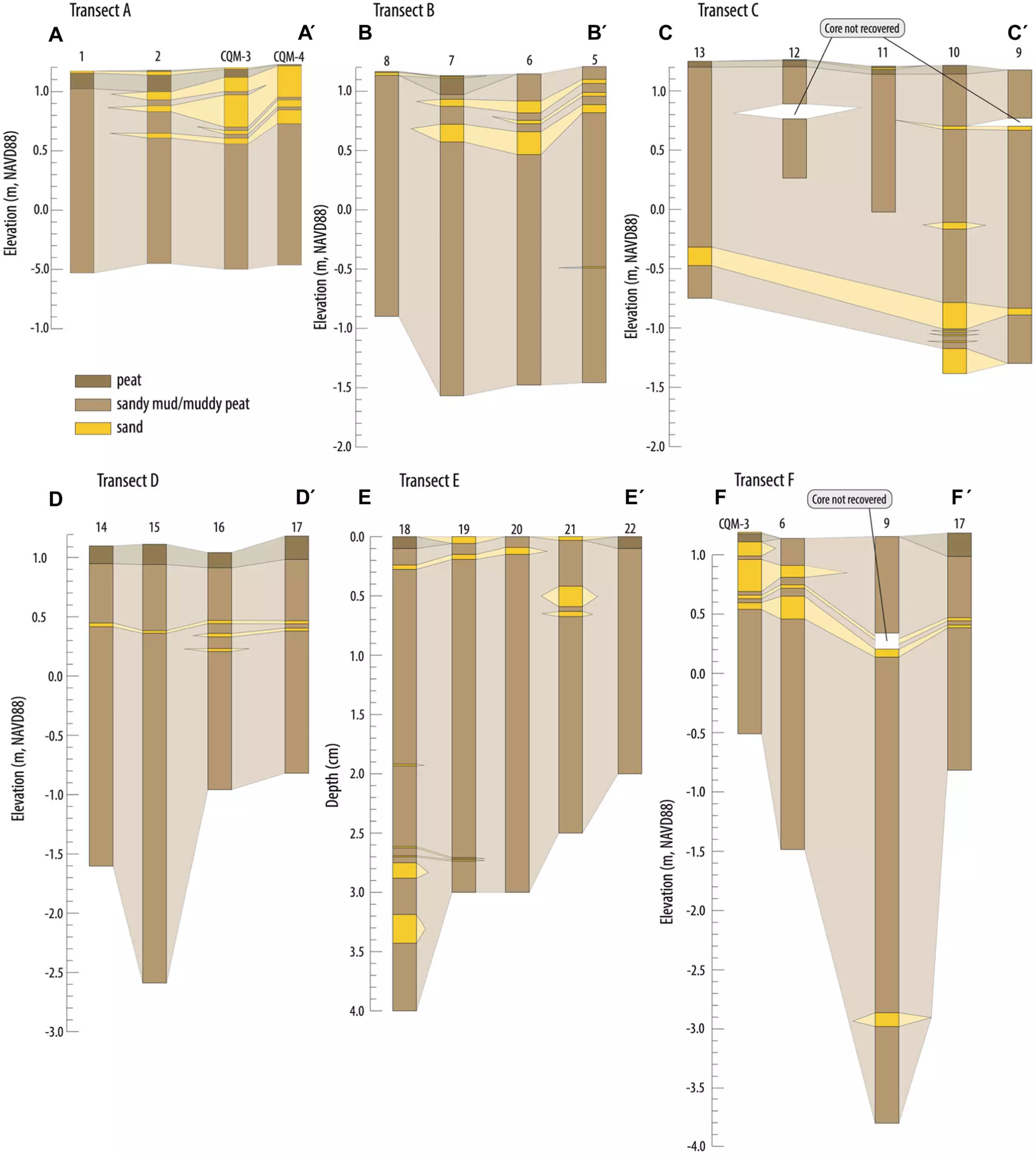A team of researchers at Rutgers University-New Brunswick has made significant strides in our understanding of historical hurricanes by employing innovative sediment analysis techniques. This proactive approach focuses on uncovering storm histories that extend over four centuries back in time, effectively surpassing the constraints of contemporary instrumental records. The research, published in the esteemed Journal of Quaternary Science, primarily concentrated on sediment layers beneath New Jersey’s Cheesequake State Park, revealing eight distinct storm deposits—the oldest dating back to 1584. By indicating that extreme weather events are not new to the region, the study offers a potent weapon in the arsenal against the uncertainties of climate change.
Historically, scientists have relied on tidal gauges and historical analogs such as shipping logs and newspapers to analyze past storms. However, these methods lack the depth necessary to fully understand storm frequency over time. Kristen Joyse, the lead author and a coastal sedimentologist, advocates for a broader geological approach. “Extending the geological timeline more deeply into the past is necessary for better understanding,” she asserts, clearly confident in her findings.
Reconstructing Past Events Through Overwash Deposits
Overwash deposits—created when hurricanes produce storm surges, pushing sand inland into wetlands—serve as key indicators of historic hurricane activity. Joyse and her team meticulously collected and analyzed sediment cores from various sites within the park. Their research methodology included examining grain size, organic content, carbon isotopes, and microfossils, enabling them to differentiate storm-related layers from the mundane background sediment. This investigative process is not just a technical exercise; it is an essential step in piecing together nature’s complex puzzle.
The dating of these deposits involved cutting-edge techniques like radiocarbon dating, which allowed them to pinpoint the age of woody plant material buried within the sediments. With deposits corresponding to known hurricanes—such as the devastating Hurricane of 1938 and the historic storm of 1788—the researchers confidently established connections between ancient and recent hurricane events.
Contrasting Historical Perspectives with Modern Data
While the study revealed a wealth of information from ancient sediments, Joyse and her colleagues acknowledged certain limitations in the data. Not all extreme storm events are faithfully captured in the sediment records. For example, the tidal gauges at Sandy Hook and lower Manhattan documented several episodes of unusually high water levels that were absent from the sediment samples. This discrepancy suggests that while the sediment records extend knowledge further back in time, they do not deliver a complete snapshot of every extreme weather event.
Co-author Robert Kopp points to this duality in the findings: “These sediment records can be used to reconstruct past storm histories, but not to the resolution of instrumental records like tide gauges.” This tension is a crucial element of the research, offering a nuanced view of how we understand storm patterns—one that emphasizes the need for further investigation into why some storms are preserved in sediment layers while others go unrecorded.
The Implications for Future Research and Climate Understanding
The implications of this research are profound. By uncovering a more extensive record of hurricane activity, scientists can begin to delve into essential questions regarding storm frequencies as they relate to climate change. Joyse argues that understanding the sedimentary records enables researchers to better formulate hypotheses about how climatic variables impact storm activity. “We can ask new questions: Why do some storms get preserved, and how does the probability of preservation change over time?” she states, expressing the excitement inherent in newfound knowledge and its potential applications.
Moreover, the research team’s findings offer a pathway for future studies to explore the broader implications of changing storm frequency. With climate models constantly evolving, understanding past storm behaviors will be critical for predicting what future storms might look like in a warming world. As we analyze the combination of historical sediment data and modern climatological models, we can more accurately assess risks and prepare communities, ultimately leading to informed policy decisions.
The innovative techniques and insights present in this study mark a crucial advancement in both geological research and the broader field of climate science. By rethinking how we interpret the remnants of nature’s past, scientists at Rutgers University-New Brunswick are not just uncovering ancient storm histories but laying the groundwork for a more resilient future in the face of climate change.

